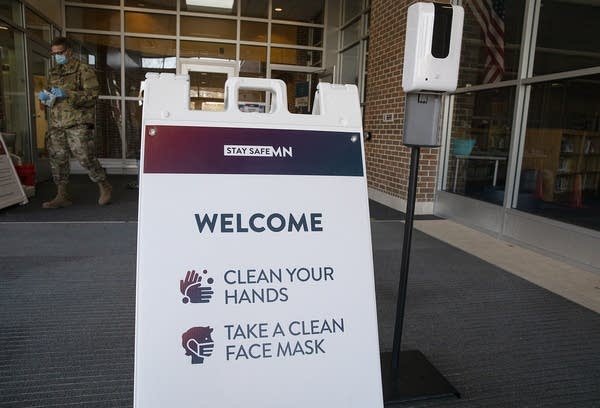CDC raises COVID risk ratings in Minnesota, eases national guidance

Go Deeper.
Create an account or log in to save stories.
Like this?
Thanks for liking this story! We have added it to a list of your favorite stories.
On Thursday the Centers for Disease Control and Prevention issued new guidance on “minimizing the impact of COVID-19.” As widely reported, the new guidance eased recommended restrictions by lifting quarantine requirements for those who have been exposed to COVID-19 without feeling symptoms. This includes lifting the testing regime for exposed K-12 students who do not have symptoms.
At the same time, the CDC’s guidance doubled-down on recommending that individuals know their own risk, including knowing the risk in their local community as represented through their “Community Level” ratings. A map is even included in their new infographic.
As we’ll discuss below, this week’s CDC map for Minnesota shows many more counties at high risk — 22 up from nine the previous week. While the state’s largest population center, the Twin Cities metro, is still rated as low risk, much of the rest of the state is now rated as having at least medium risk. Residents of high risk counties are advised to wear masks at public settings indoors.
Increase in cases continues in southwestern Minn., slows in central and northwest
Some good news this week: after several weeks of increasing cases in the West Central and Northwest regions of the state, cases went down this week. Most of the other regions saw cases stay approximately the same. The exception to this was the Southwest region, which has now had an increase in cases for four weeks in a row. And we see similar trends in the wastewater data by region from the University of Minnesota’s Wastewater SARS-CoV2 Surveillance Study.
Turn Up Your Support
MPR News helps you turn down the noise and build shared understanding. Turn up your support for this public resource and keep trusted journalism accessible to all.

Data from the Metropolitan Council and the University of Minnesota’s Genomic Center indicates a similar 1 percent decrease in metro wastewater COVID RNA for the past week of available data (Aug. 2 – Aug. 8), and BA.5 continues to be the dominant variant, constituting 85 percent of the viral load. They are testing for BA.2.75 but have not detected it.
Hospitalizations and deaths indicate continued plateau phase
Hospitalizations remain approximately the same as past weeks. But, as former MPR News reporter David Montgomery pointed out on Twitter, data shows that non-ICU hospital bed use is on the rise. As he also pointed out, this could be due to patients staying longer in hospitals, but we don’t know that for sure.


Deaths in mid-July, which should be close to the final numbers now, went back up to match their earlier peak in this plateau phase. This week, the unconfirmed data shows a lower number of deaths, but we don’t know yet if that will hold.

CDC Community Level ratings place 22 Minnesota counties at high risk — not including the Twin Cities
Twenty-two counties — all outside of Twin Cities metro — are rated high risk, where guidance includes masking up indoors. Last week only nine counties were rated high risk.
Wastewater and case data suggests an increasing amount of COVID-19 has been circulating in the western part of the state. The county view shows that cases may be particularly high in Big Stone County, which has high numbers of both cases and hospitalizations.
MPR News wants to hear from you: Please click on this sentence to fill out a questionnaire that gathers your reflections on what life has been like for you during the pandemic.



